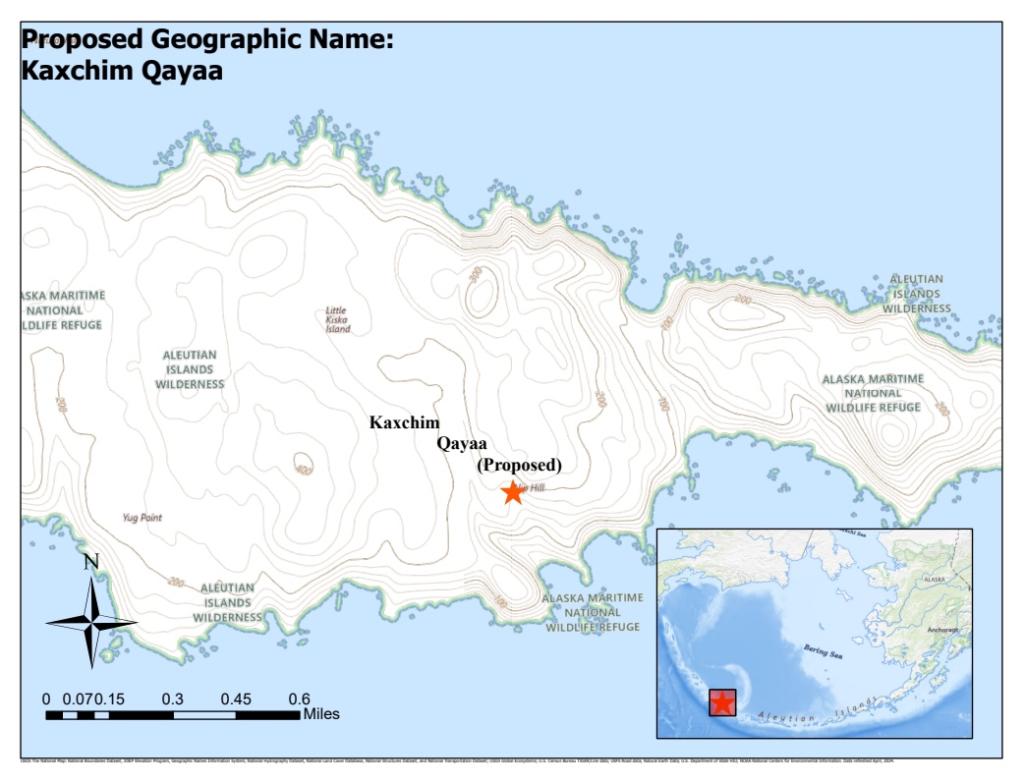A one-mile stream in Alaska dubbed “Nazi Creek” after it was reclaimed from the Axis Powers during World War II has finally been renamed after more than seven decades of debate.
Kiska Island and Little Kiska at the far western end of the Aleutian Islands in Alaska were taken over by the Japanese military in June 1942, mere months after the devastating attack on Pearl Harbor 1,000 miles away.
The occupation lasted a year. But it wasn’t the Japanese who gave the creek its hotly contested name.
Instead, American soldiers dubbed the stream “Nazi Creek.”
The title was “arbitrarily applied to features” around the area by the US Army Air Forces for tactical reasons during the war, according to the Dictionary of Alaska Place Names.
Even after World War II ended, the name remained at a federal level and was placed on an Army map in 1953 before Alaska joined the US six years later.
At the time, the military used an alphanumeric grid system on its maps. The mile-long stream fell into the “N” grid, and so Nazi Creek was born.
Other natural features nearby were named under the same system, including places Moron Lake, Rat Lake, Jeff Cove, Robert Ridge and Magic Mountain, according to the Alaska Guide Company.
Some other spots like Auburn and Brunette Cove were also named by soldiers who just liked the titles because of the association with classic “pin-up” girls, according to the website.
Renaming Nazi Creek was a two-year-long endeavor spearheaded by Alaska historian and map enthusiast Michael Livingston. The historian sought to establish new titles to reflect the Indigenous Aleutian Unangax̂ who originally resided in the area, he told KUCB last year.
The proposed name was workshopped over time, but it stayed centered around “Kangchix̂,” the island’s Unangax̂ name, which translates to “gizzard” in English.
Finally, the creek’s name will be changed to “Kaxchim Chiĝanaa,” which translates to “creek or river belonging to gizzard island.”
Livingston also lumped in a campaign to rename nearby “Nip Hill” — an ethnic slur against Japanese people. Like the creek, its name was changed to “Kaxchim Qayaa,” or “gizzard hill.”
“It wasn’t appropriate in the 1940s, and it’s certainly still not appropriate in the 2020s,” he told the outlet.
During the spring, the Alaska Historical Commission voted unanimously to change the names, which gave the effort more momentum.
The US Board on Geographic Names has since approved the name changes, making way for the federal government to remove Nazi Creek and Nip Hill from databases, according to the New York Times.
The roughly 880 Unangax̂ residents who lived on the island when it was raided by the Japanese were evacuated and placed into internment camps by the United States.
Roughly 80 died of disease while festering in the miserable conditions, according to “Unangax̂: Coastal People of Far Southwestern Alaska,” a paper by Douglas Veltre, an emeritus professor of anthropology at the University of Alaska Anchorage.
Tens of thousands of people of Japanese descent, including US citizens, were also placed in similar internment camps after the attack on Pearl Harbor. Congress voted in favor of paying reparations to both groups in 1988, specifically for the harm they suffered while imprisoned.
Read the full article here

